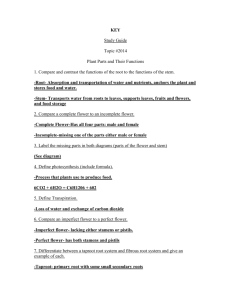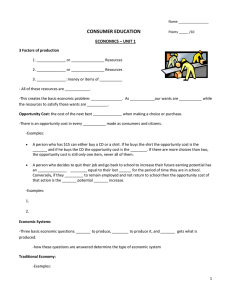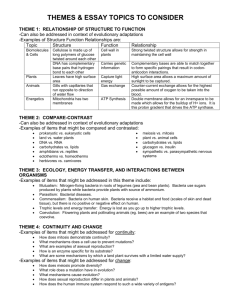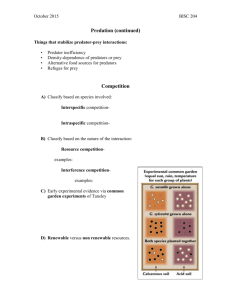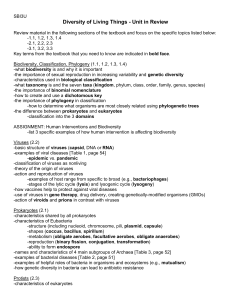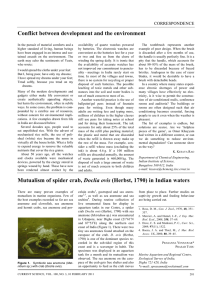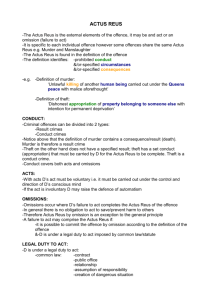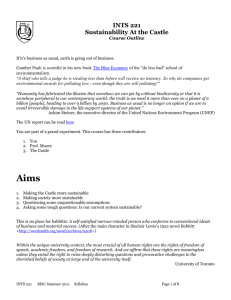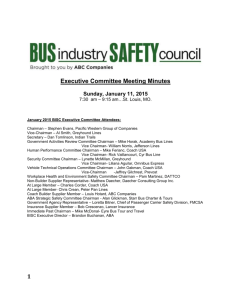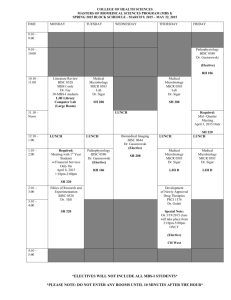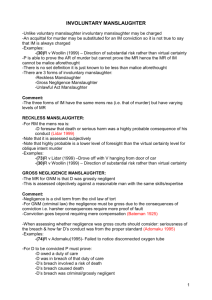13-Positive interactions
advertisement
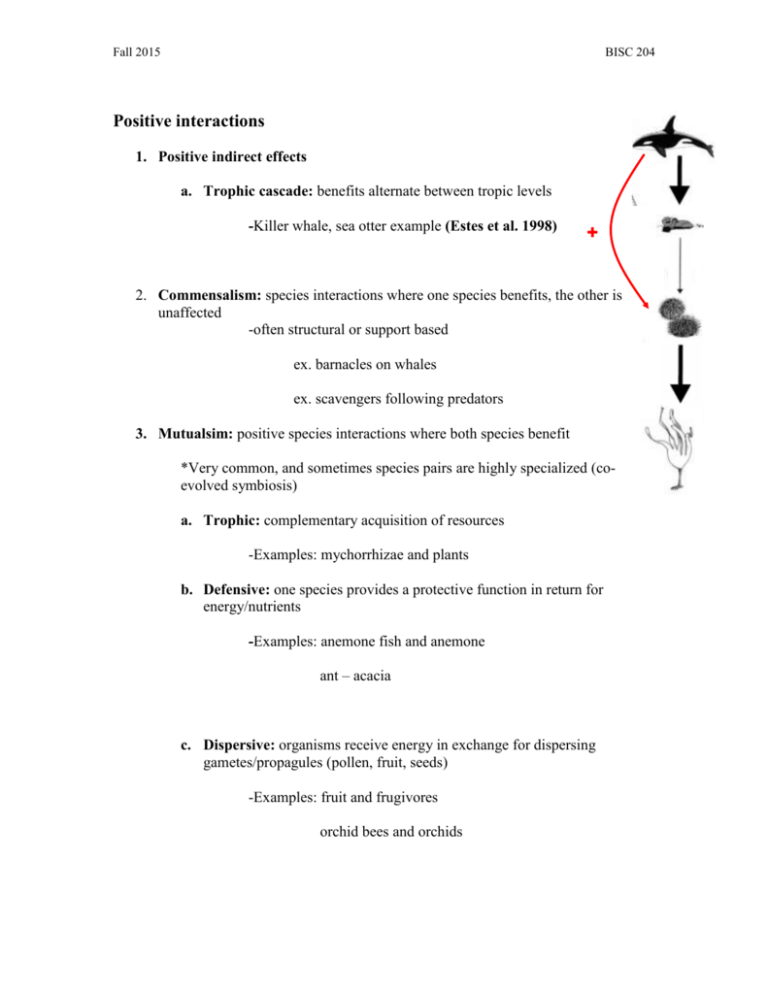
Fall 2015 BISC 204 Positive interactions 1. Positive indirect effects a. Trophic cascade: benefits alternate between tropic levels -Killer whale, sea otter example (Estes et al. 1998) + 2. Commensalism: species interactions where one species benefits, the other is unaffected -often structural or support based ex. barnacles on whales ex. scavengers following predators 3. Mutualsim: positive species interactions where both species benefit *Very common, and sometimes species pairs are highly specialized (coevolved symbiosis) a. Trophic: complementary acquisition of resources -Examples: mychorrhizae and plants b. Defensive: one species provides a protective function in return for energy/nutrients -Examples: anemone fish and anemone ant – acacia c. Dispersive: organisms receive energy in exchange for dispersing gametes/propagules (pollen, fruit, seeds) -Examples: fruit and frugivores orchid bees and orchids Fall 2015 BISC 204 One mechanism that can produce mutualisms (there are others): Coevolution (see classic paper by Ehrlich and Raven 1964): Evolutionary change in a trait of species A in response to a trait in species B -Primarily driven by tight species associations -Specific (particular traits) and reciprocal (between both species) -Can be either antagonistic or mutualistic: can manifest as evolutionary “arms races”
